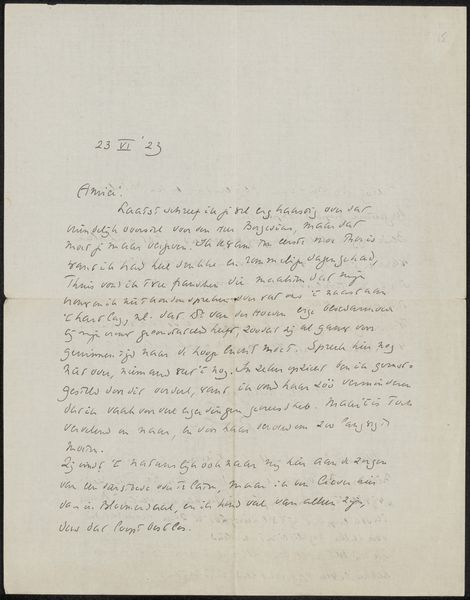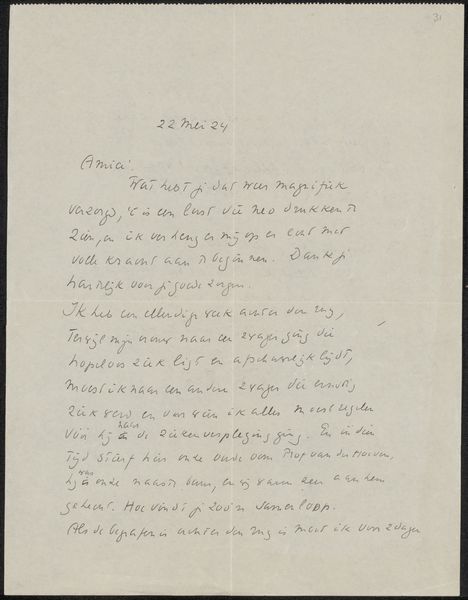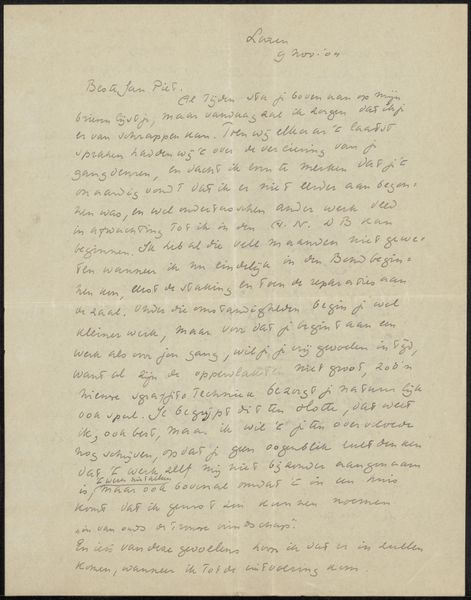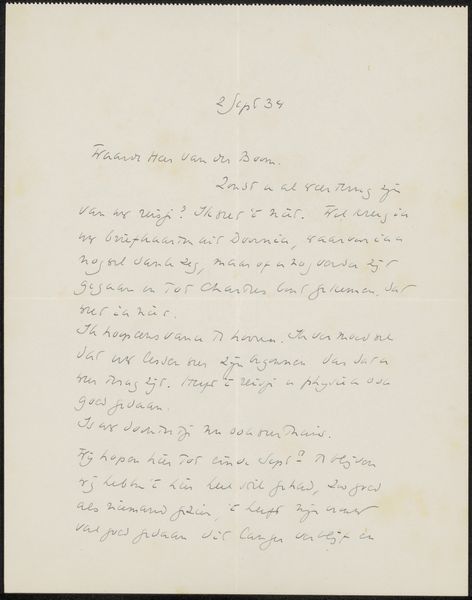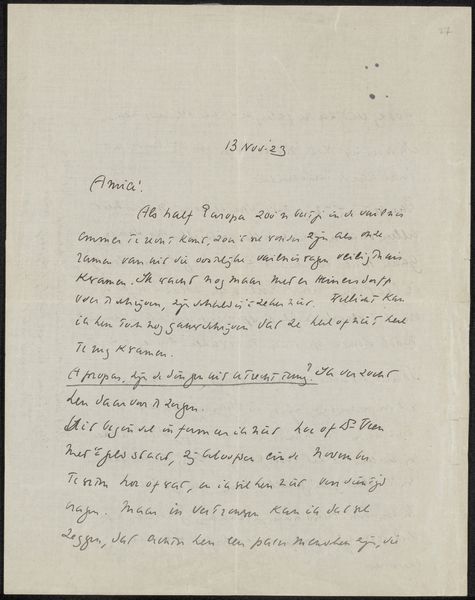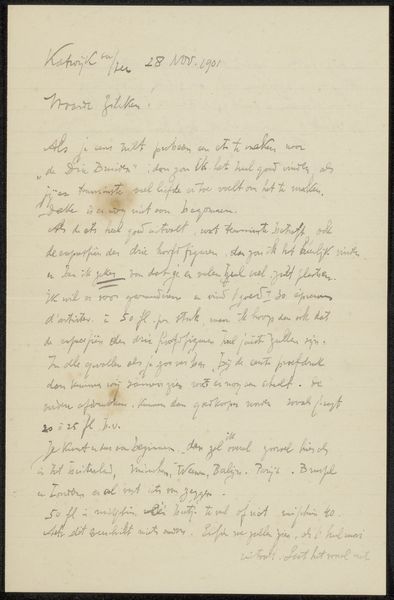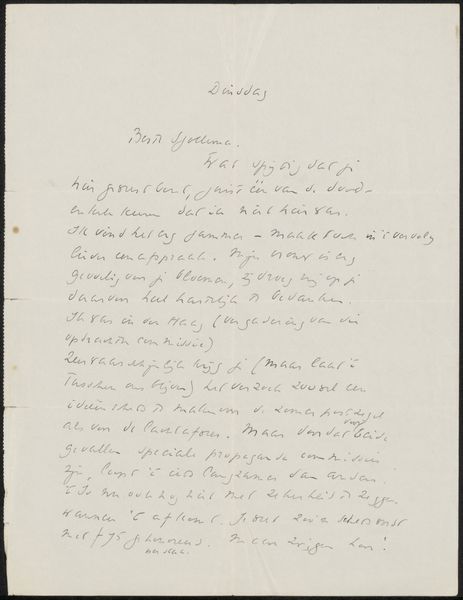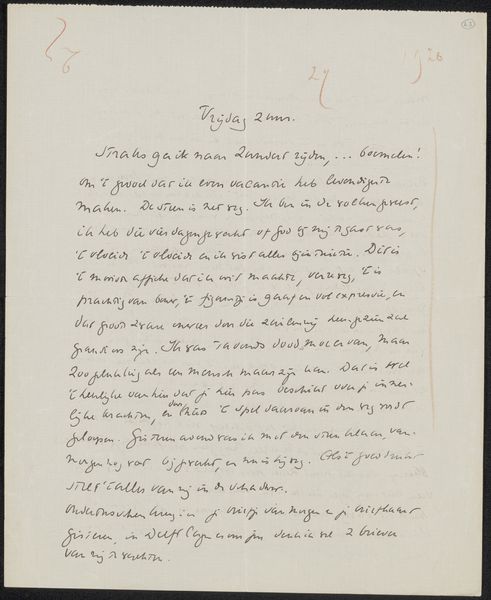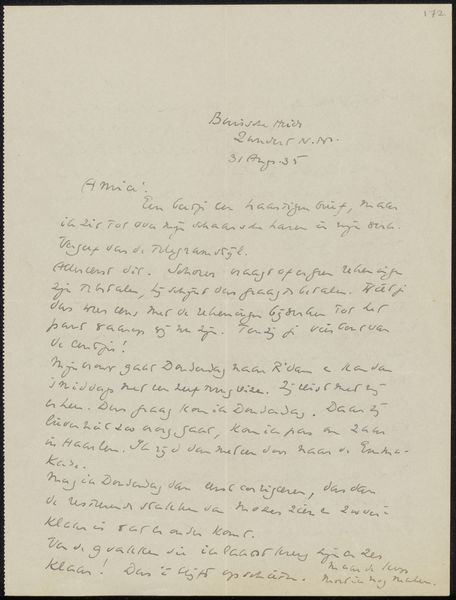
Brief aan Jan Veth en Anna Dorothea Dirks Possibly 1921
0:00
0:00
richardnicolausrolandholst
Rijksmuseum
drawing, textile, paper, ink
#
drawing
#
ink paper printed
#
textile
#
paper
#
ink
Copyright: Rijks Museum: Open Domain
Curator: Here we have "Brief aan Jan Veth en Anna Dorothea Dirks," likely from 1921, by Richard Nicolaüs Roland Holst. It’s a letter rendered in ink on paper, currently residing at the Rijksmuseum. Editor: It feels so… intimate. Like catching a glimpse of someone's private thoughts. All that handwriting makes it seem so personal and immediate. What stands out to you? Curator: The handwriting itself becomes a powerful symbol. Consider the cultural moment – the early 20th century, a time of great upheaval and societal change. Handwriting was still the primary mode of personal communication. So the script becomes a direct link to the author's thoughts, anxieties, and intentions. It's a visual echo of his presence. Editor: So the letter itself functions almost like a relic? A preserved moment? Curator: Exactly! Letters hold a certain weight. They capture a specific point in time. The act of writing, particularly a letter, symbolizes connection, memory, and the preservation of ideas and feelings across time and space. We often imbue handwritten documents with an aura of authenticity. How do you respond to that? Editor: I suppose it reminds me that art isn’t always a grand statement. Sometimes it's the small, human moments that carry the most meaning. Curator: Precisely. These subtle pieces reveal just how the act of creation itself imbeds cultural meaning. Editor: Thanks for that! Now I know there is more here than meets the eye.
Comments
No comments
Be the first to comment and join the conversation on the ultimate creative platform.
